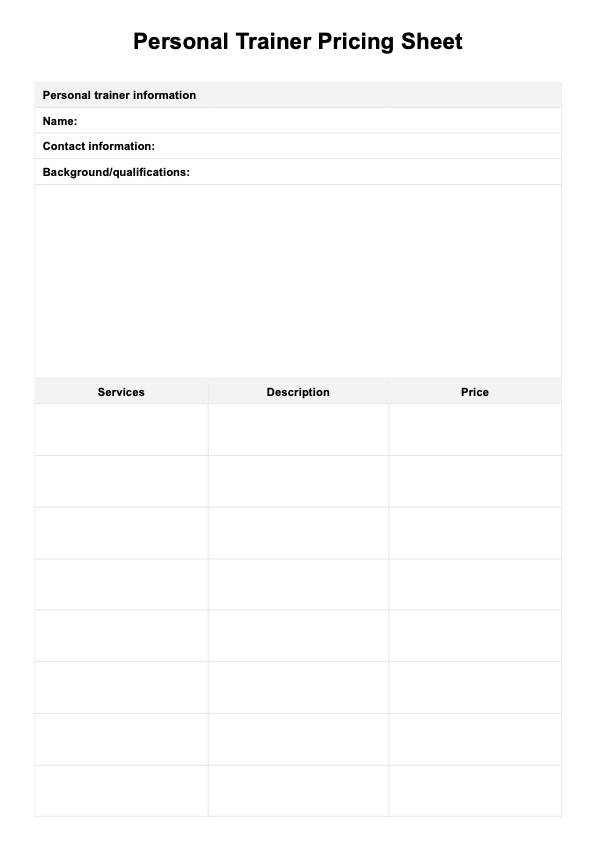Offering discounts for package deals or referral incentives can attract potential clients while maintaining value for your services.

Personal Trainer Pricing Sheet
Set competitive rates for personal training sessions with our Personal Trainer Pricing Sheet. Elevate your fitness business with transparent pricing.
Use Template
Personal Trainer Pricing Sheet Template
Commonly asked questions
It's essential to evaluate and adjust your prices periodically, typically every 6-12 months, to stay competitive and reflect changes in your business costs or market demand.
Yes, other professionals like a nutrition coach, group fitness instructor, or personal trainer can benefit from using a price list sheet.
EHR and practice management software
Get started for free
*No credit card required
Free
$0/usd
Unlimited clients
Telehealth
1GB of storage
Client portal text
Automated billing and online payments











